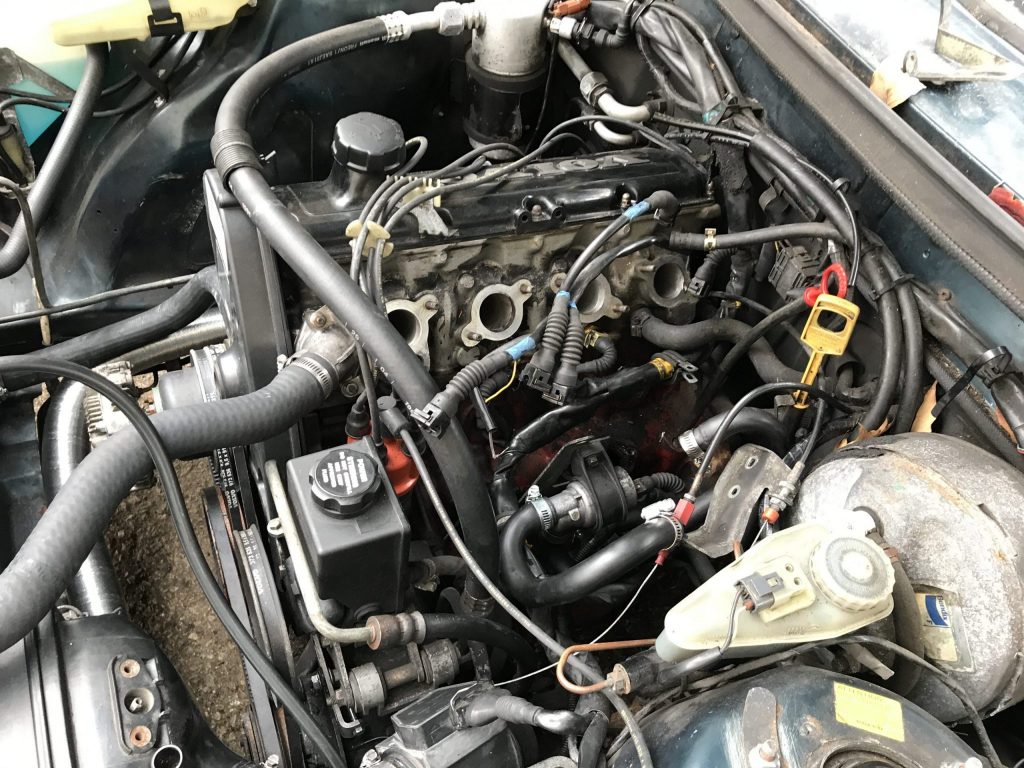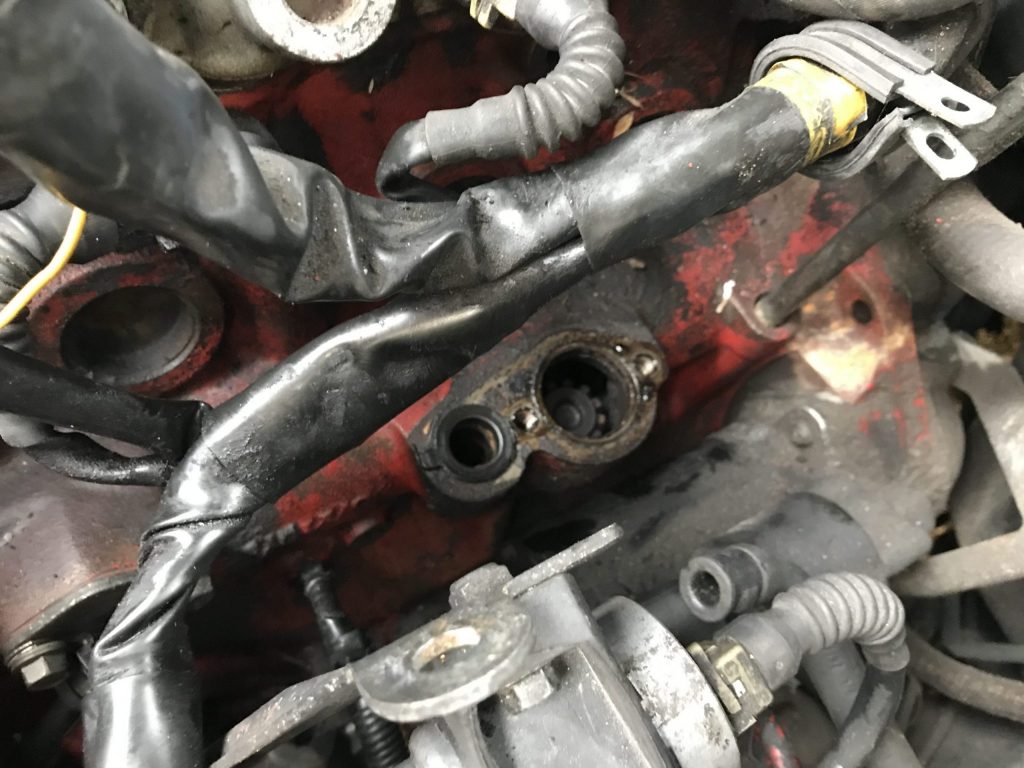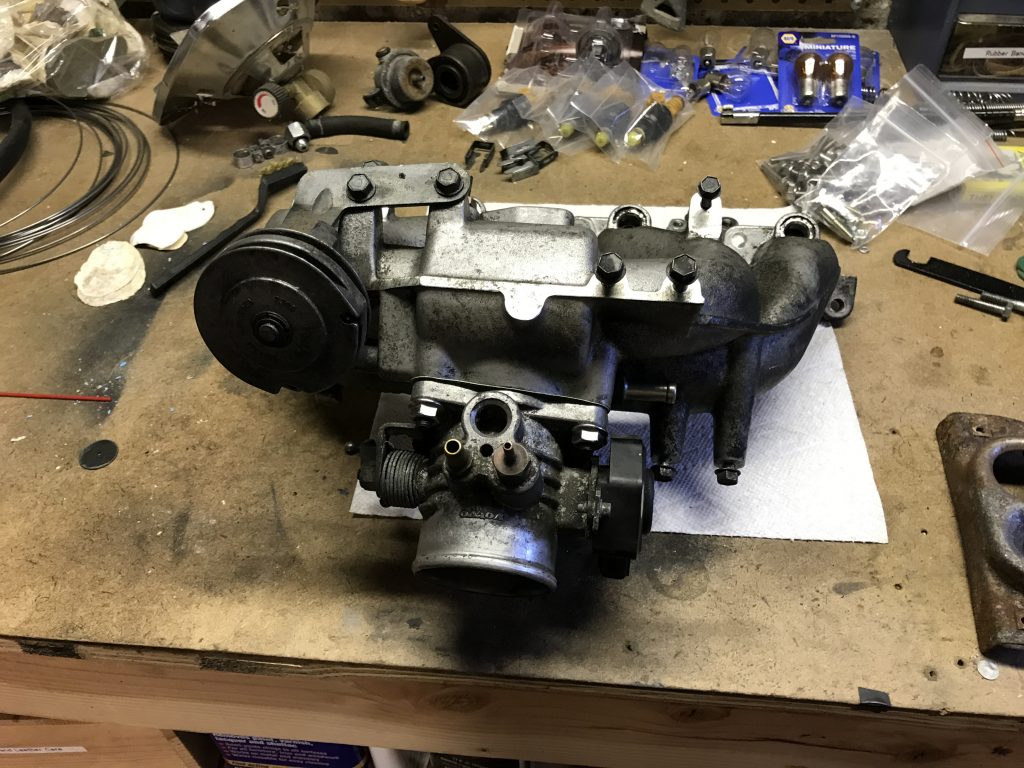As I mentioned last week, my next steps were going to be adding in all the bits that precede the final installation of in the intake manifold. Moving from the front to the back the first bit on that list will be the radiator. So that’s what I put in first.

This was simply a matter of sitting the radiator back into its rubber mounts and securing the two top corner brackets. Then the two radiator hoses are attached to the thermostat housing and water pump, the feed and return lines to the coolant reservoir, and the oil lines screwed back into the oil cooler. I also ran the pre-heat duct from the outlet of the exhaust manifold to the air box.
Next to go back in was the mass airflow sensor which bolts to a bracket with a rubber bushing. This bushing gives the MAS a bit more flexibility to move with the bouncing of the air box and ductwork, both of which are plastic and therefore not as rigid as the metal body of the car.

At this point I was just about ready to start reinstalling the air intake manifold and throttle. I had already bolted the two of them together and readied the new gasket, but as I looked down into the engine bay I saw just how gross and dirty the oil separator was looking. What is an oil separator you ask? No worries if you didn’t know – I had to look it up too, and this is how I learned about the concept of Positive Crank Ventilation.
Positive Crank Ventilation
When fuel and oxygen are combusted in a cylinder most of the resulting exhaust gasses find their way out of the engine through the exhaust valve and, eventually, out of the back of your car. A little of it, however, is bound make it’s way down past the piston’s rings and into the crank case beneath. This is called “blow-by”, and it is bad because the exhaust is, by nature, dirty and will happily stick in the oily recesses of the crank case. There they will contribute to wear on the important moving parts inside. Older cars use to just circulate air through the crank in an attempt to remove as much of the dirty exhaust as it could. It wasn’t very efficient and resulted in much more engine exhaust leaving the car. Eventually someone got the idea to use a valve to push this exhaust with its unburned fuel back around into the cylinder so it can be re-combusted which made for less exhaust and slightly better fuel economy. This concept is called Positive Crank Ventilation, or PCV.
The oil separator is part of the PCV system. It is a box the sits between the crank case and the air intake. When PCV forces those blow-by gasses back into the air intake system the oil separator helps keep oil from the crank from joining it and fouling up other parts of the engine. Over the years an oil separator can become gummed up with the accumulated oil and gunk of all the miles our car has driven. As it gets more and more clogged the function of the PCV system degrades as does overall engine performance. My car is 27 years old and definitely has never had its oil separator service. I figured that since I had easy access to it I should delay reinstallation of the intake and remove it from the engine for a good cleaning.
So out came the oil separator. It just had two bolts holding it to the engine. I removed those and gently wiggled the box up and away. It made no sounds when I shook it which I’ve read suggests that it’s not super-duper dirty with bits of carbon rattling around inside, but I also gather that this may mean it’s just very sticky with oil on the inside. I’m currently reading up on the best ways to clean it out. When I do I’ll report on what I find.


